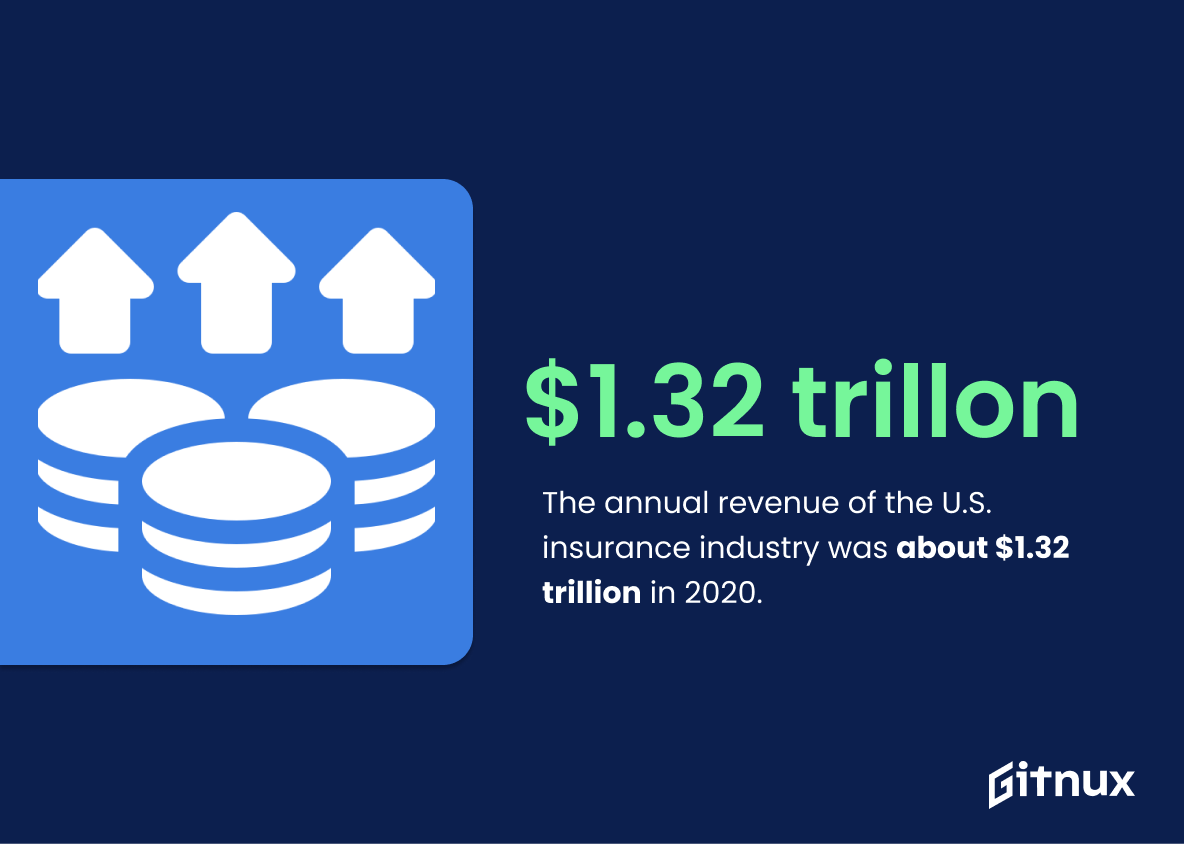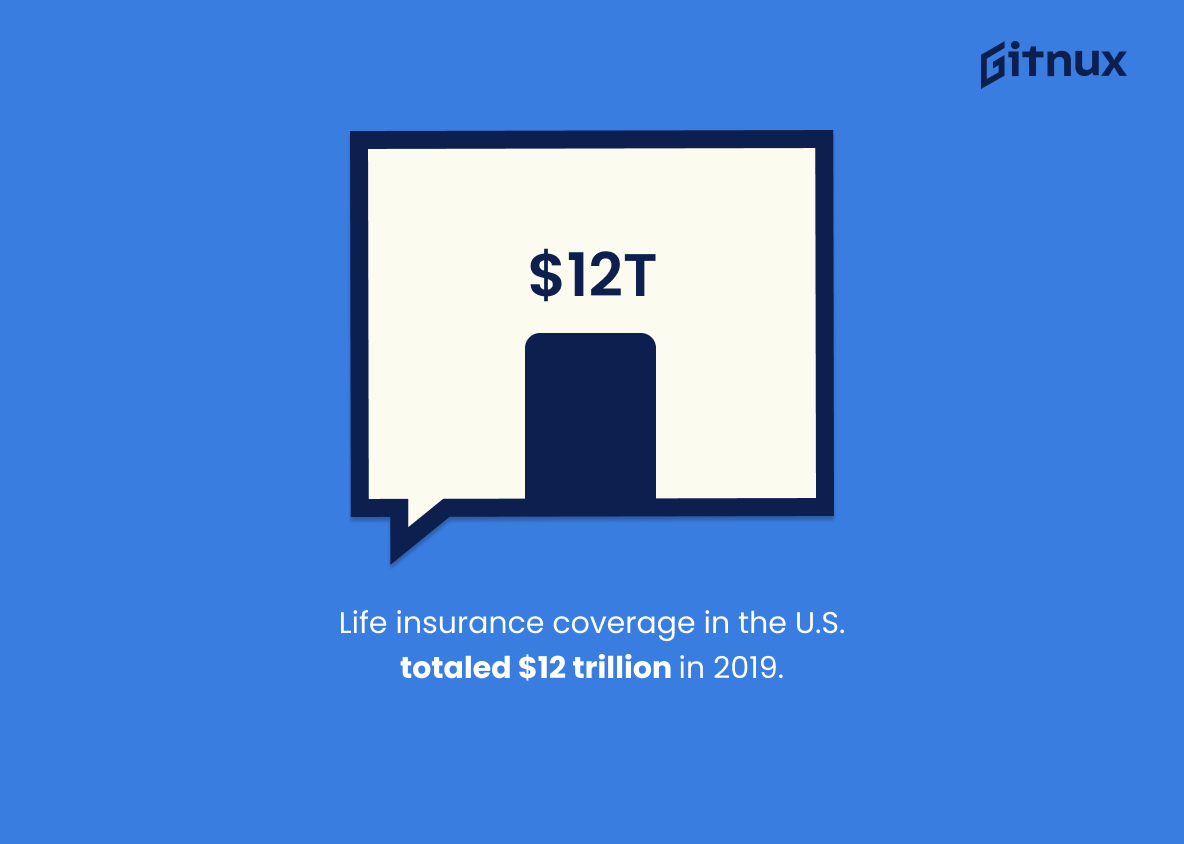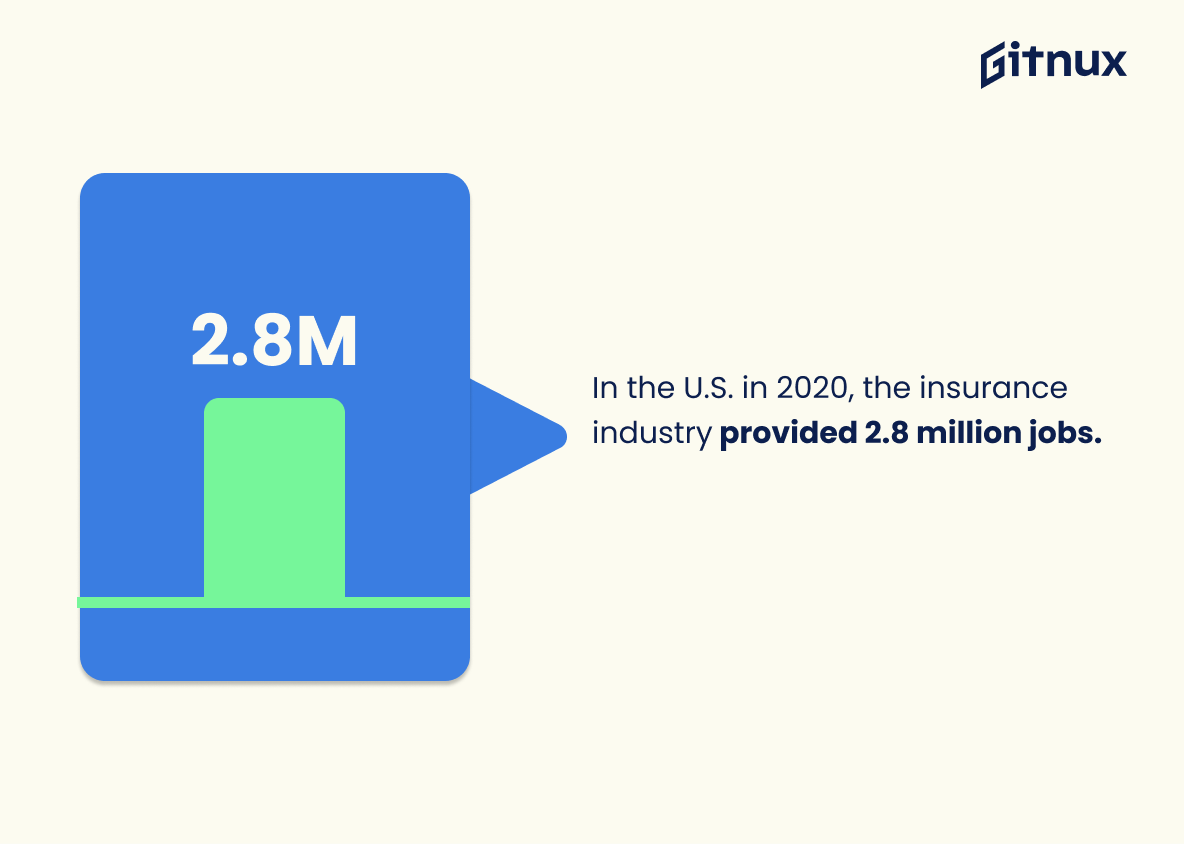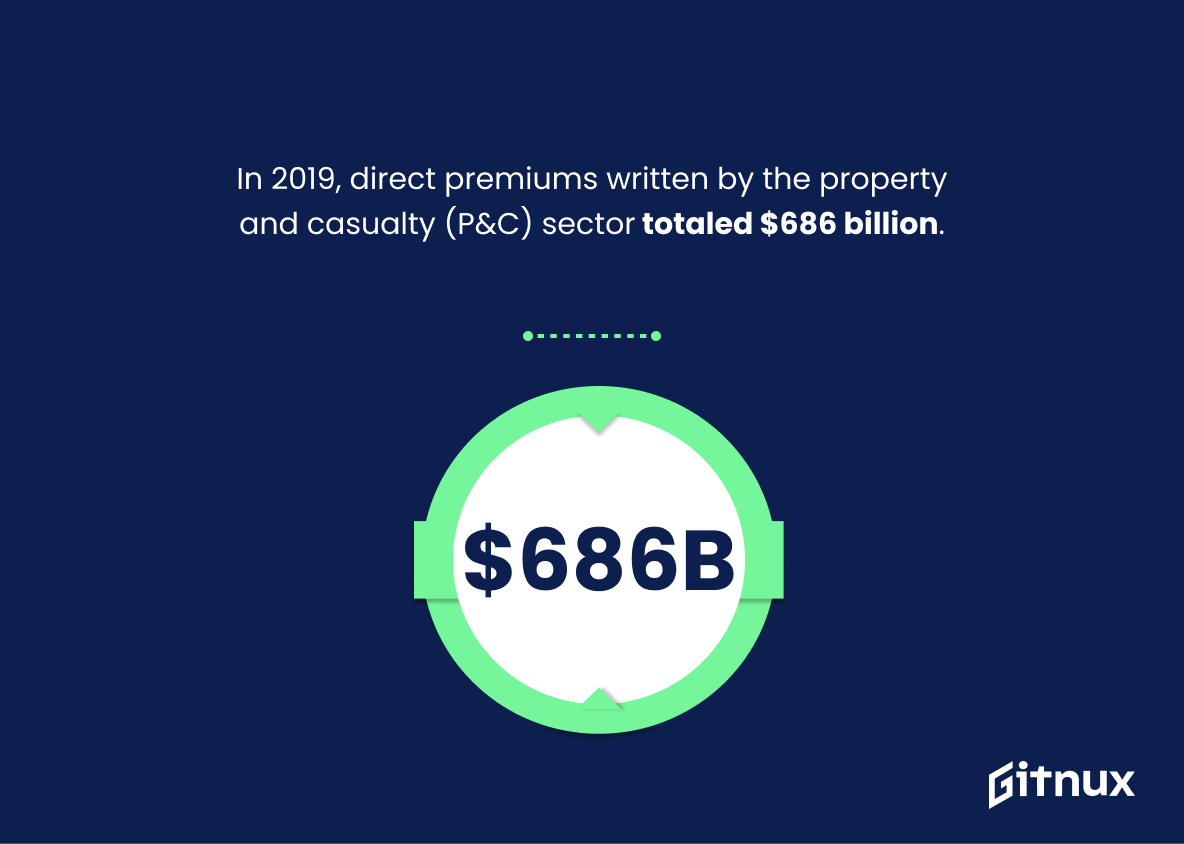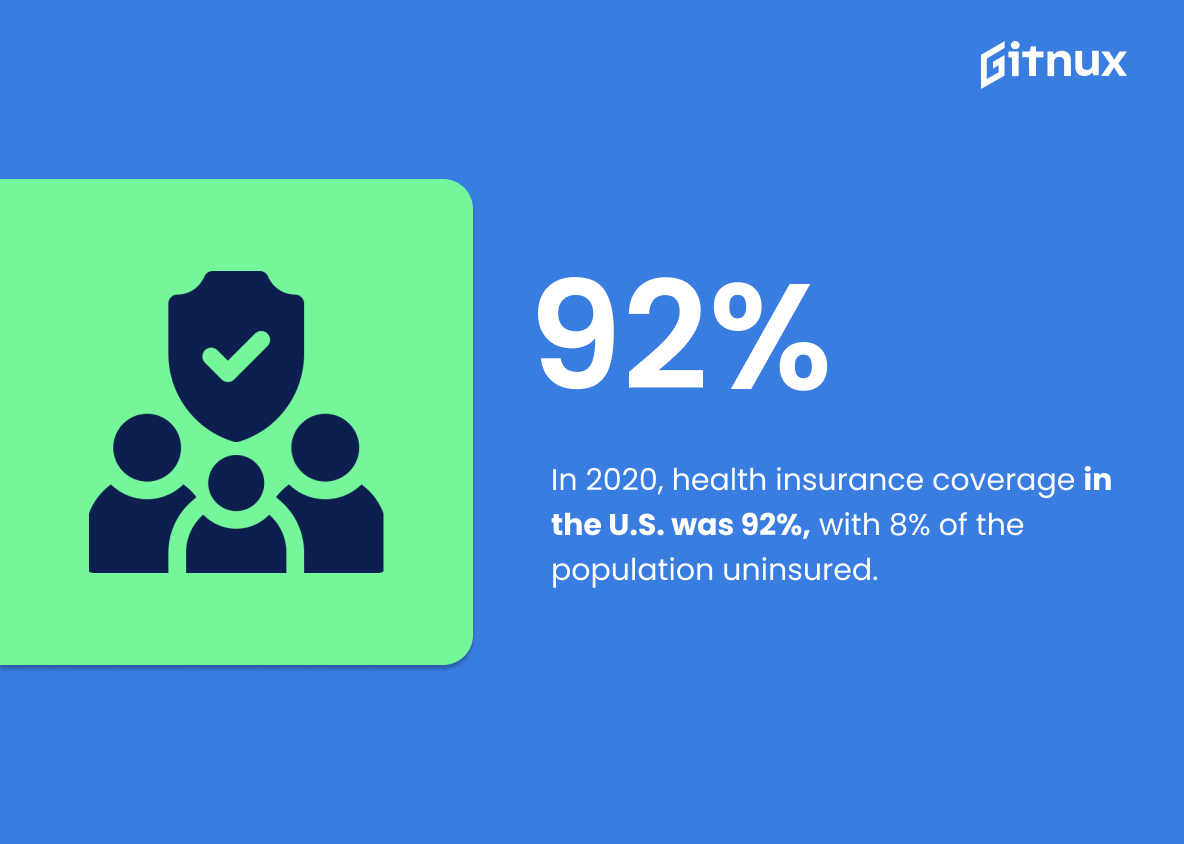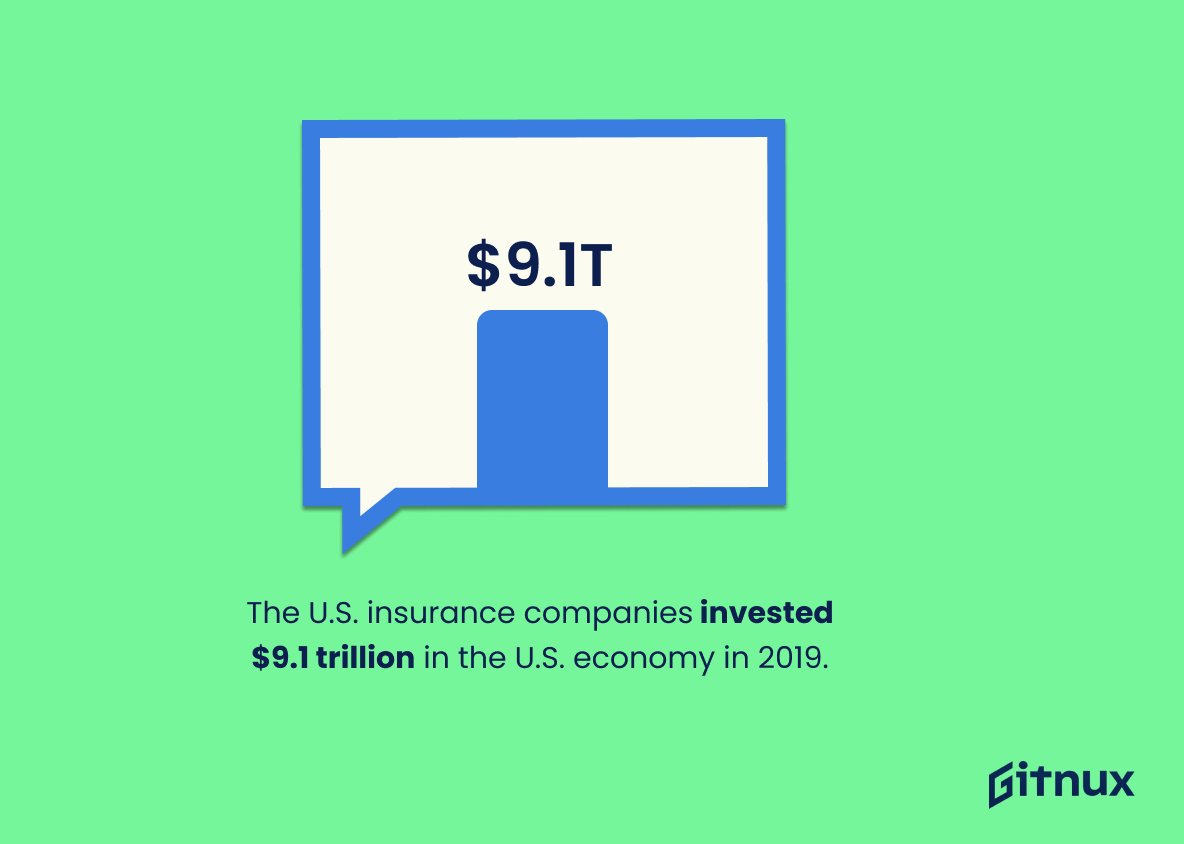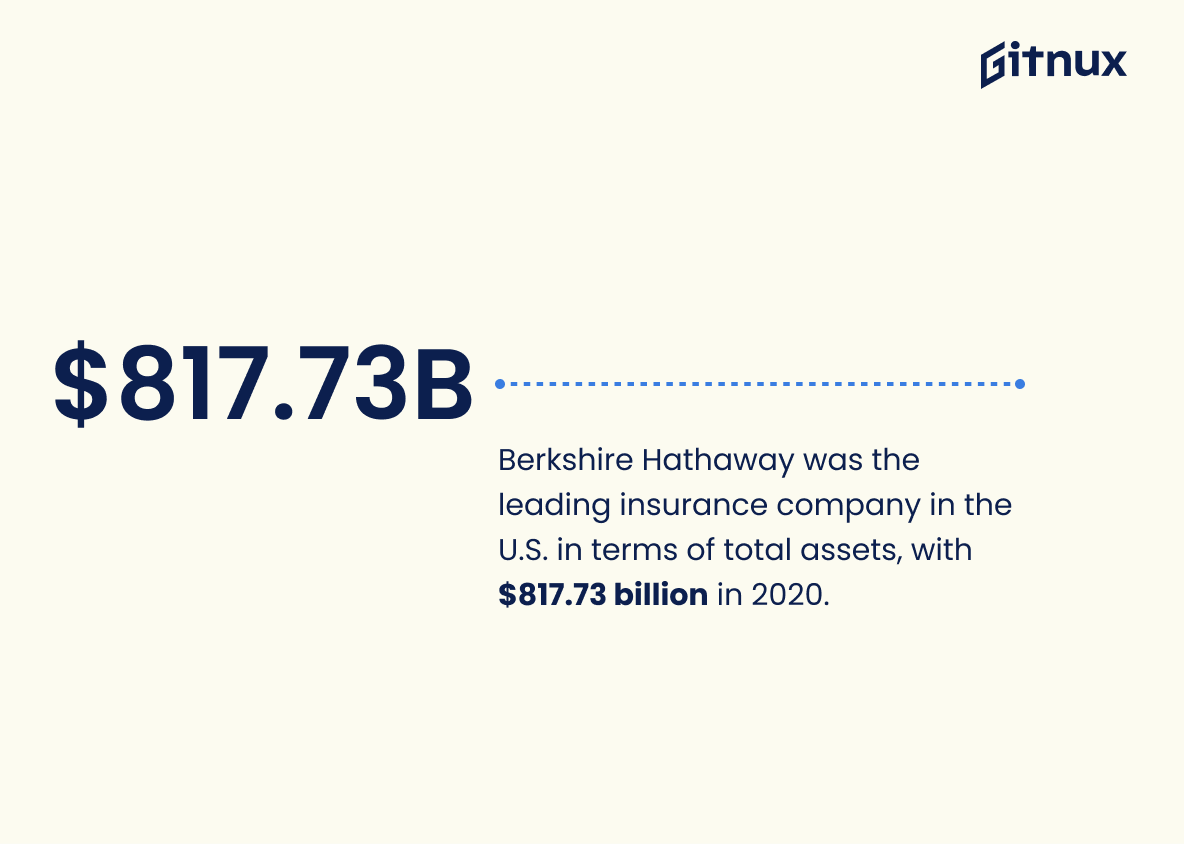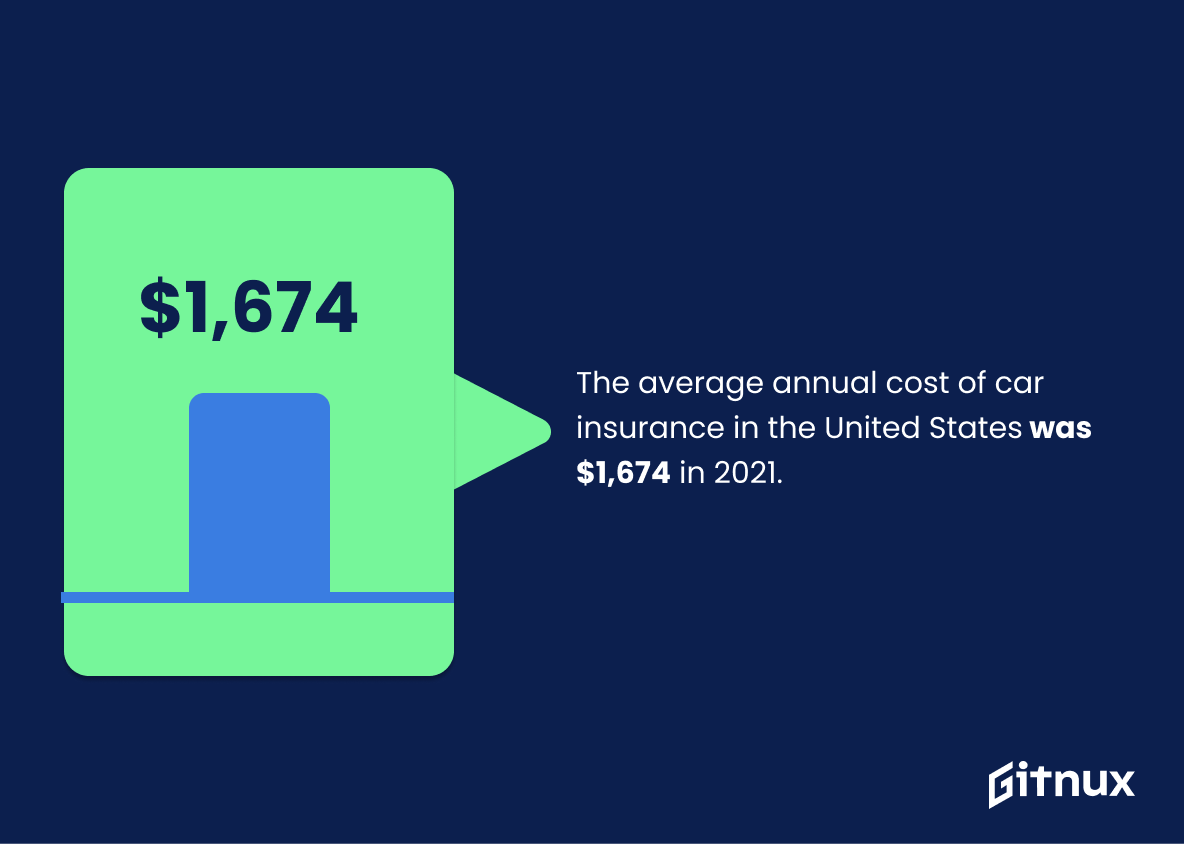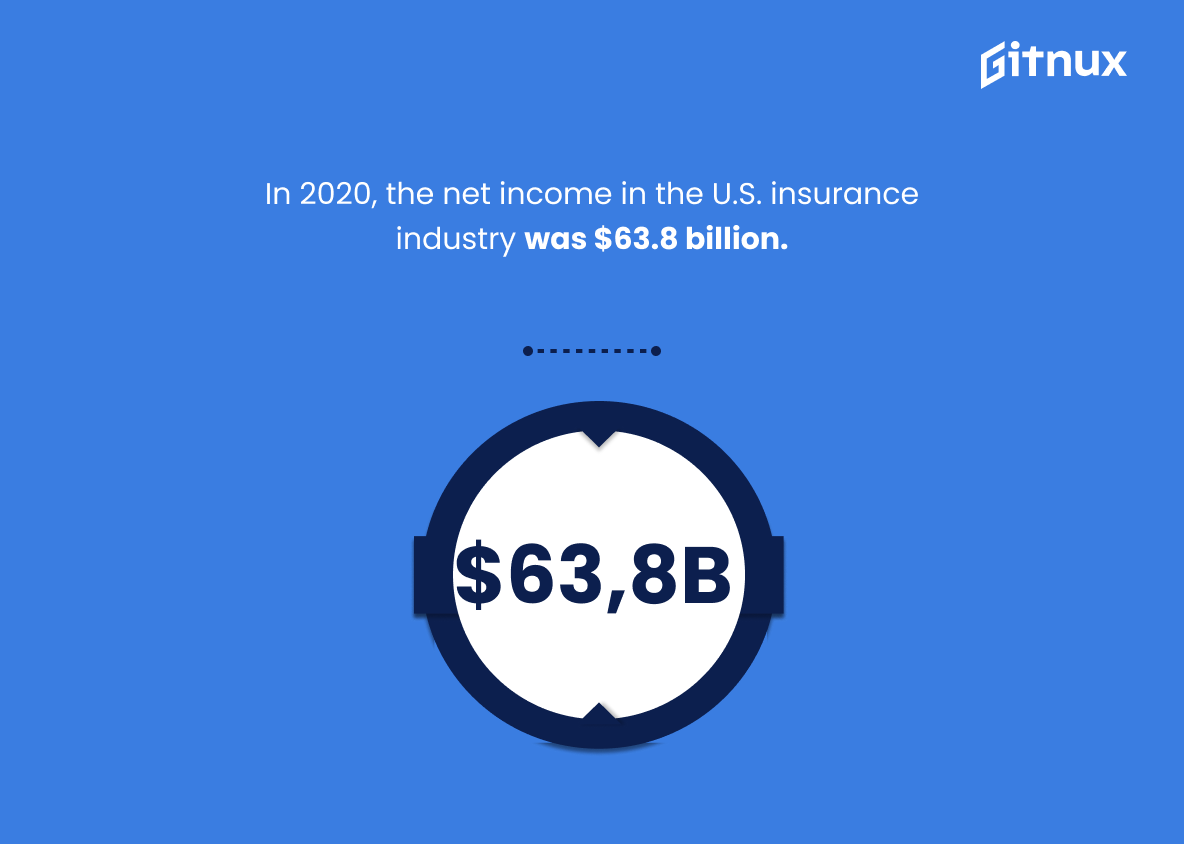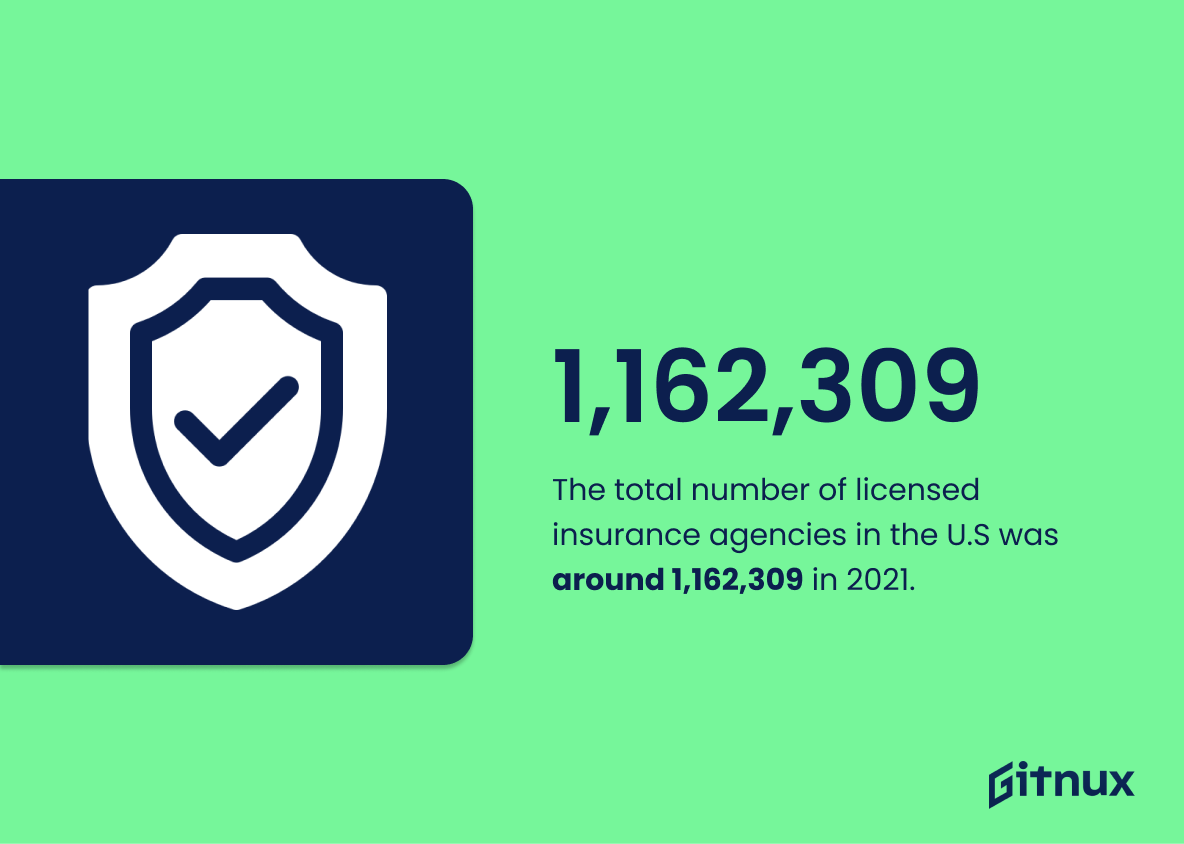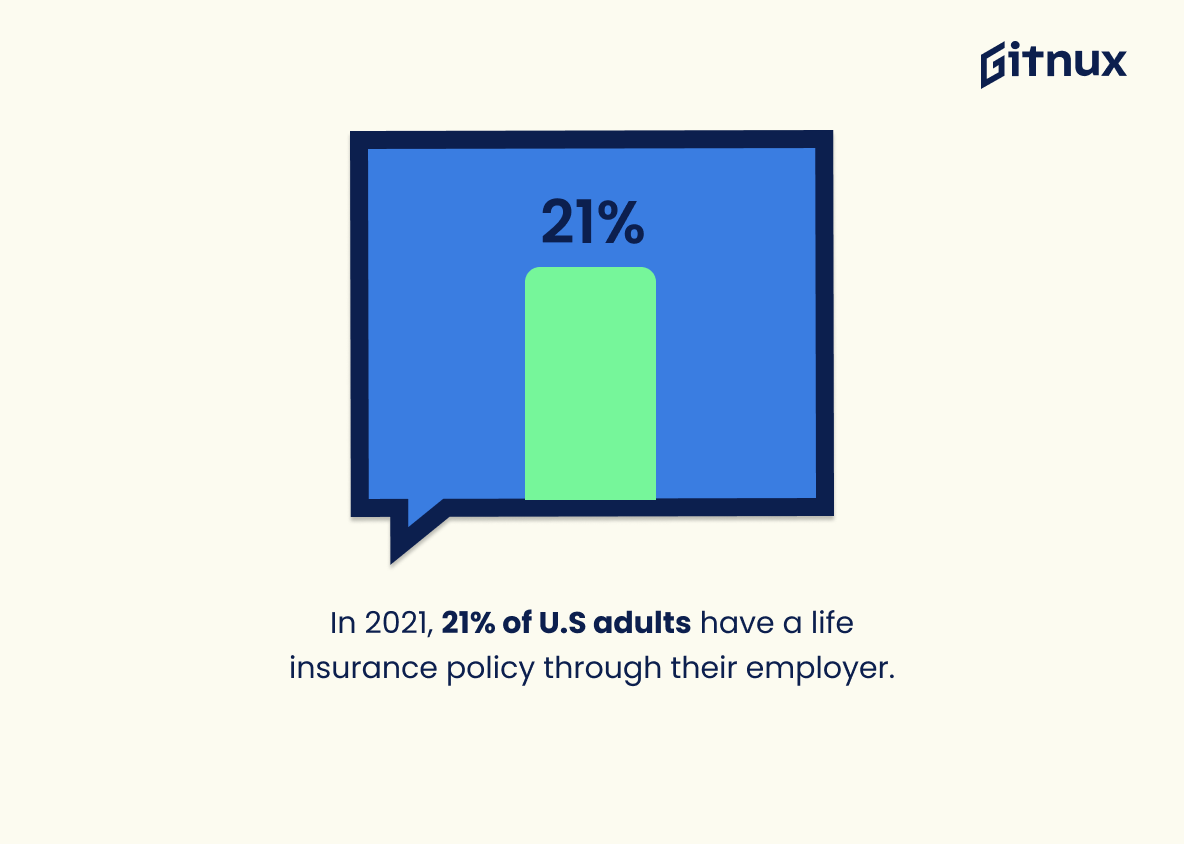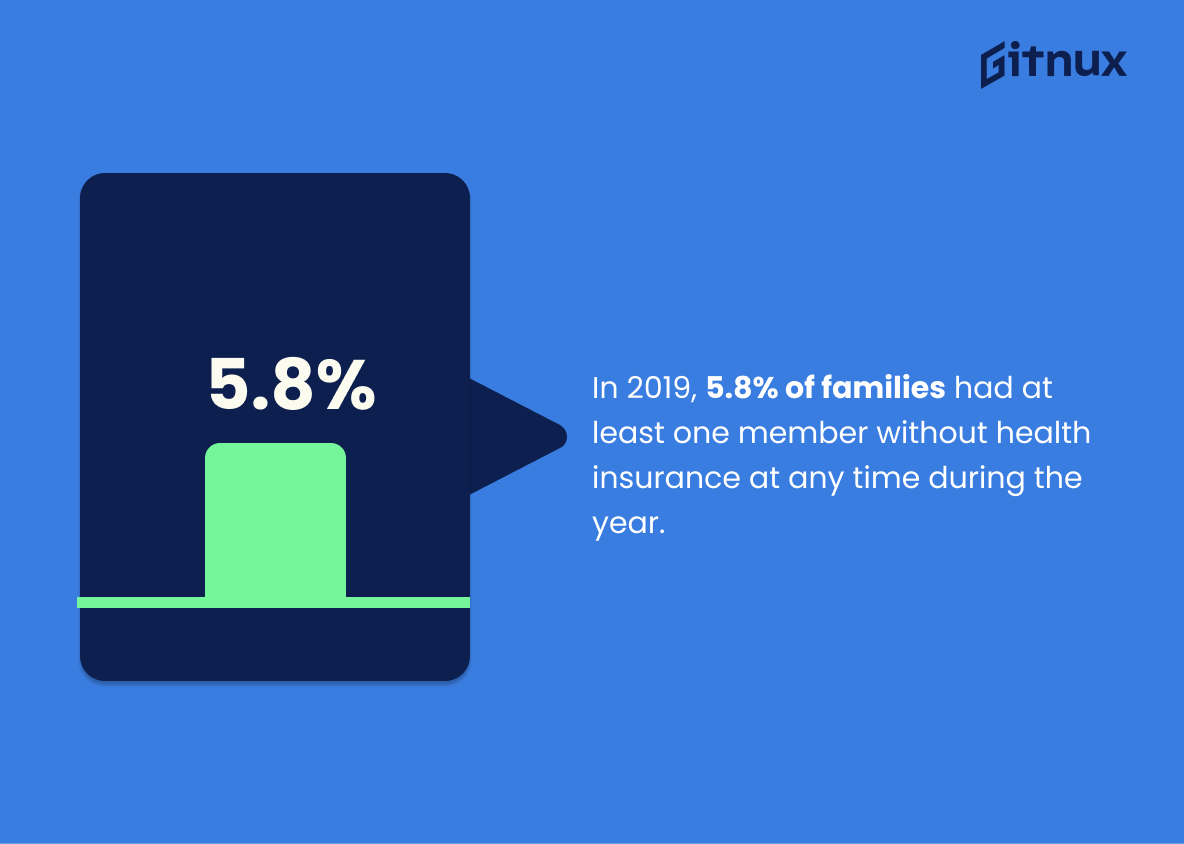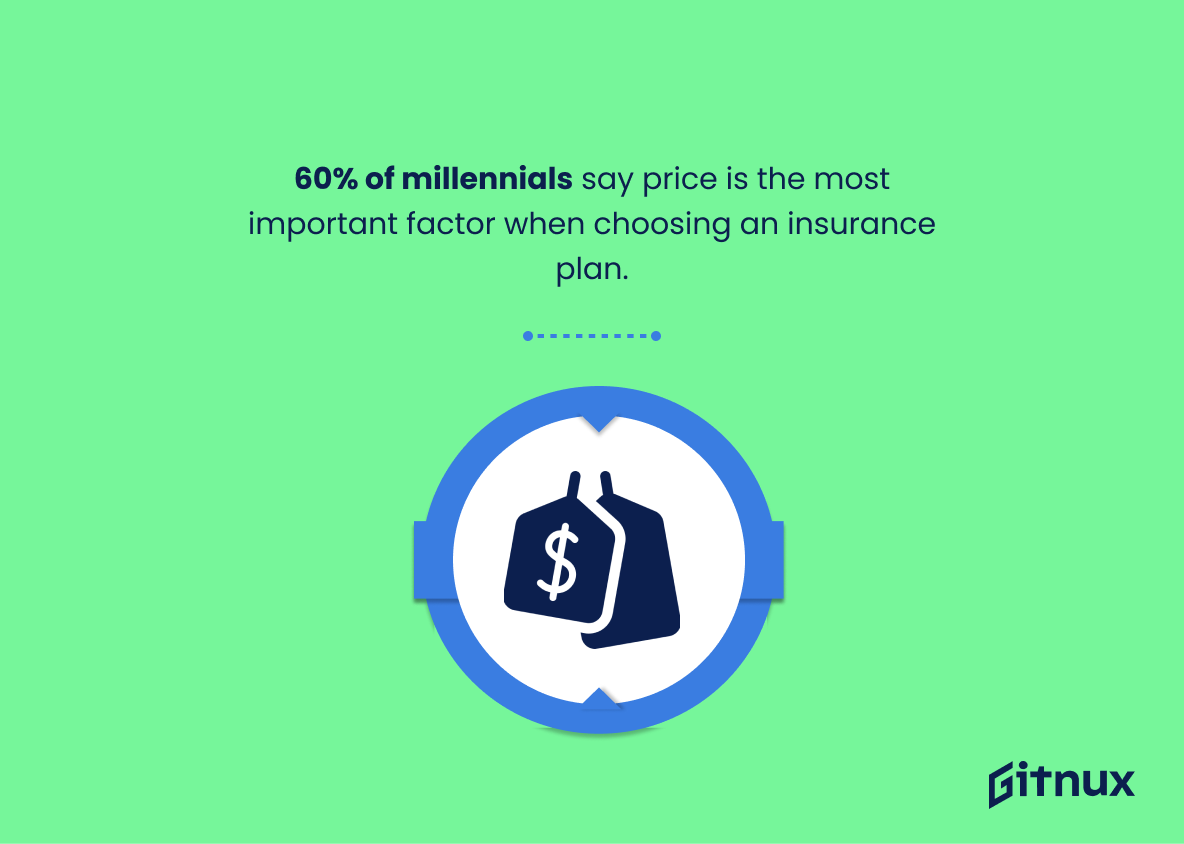Navigating through the intricate landscape of the U.S Insurance Industry can be quite a feat without a comprehensive understanding of its dynamics. This is where crunching the numbers comes into play. Insightful statistics help decipher the trends and patterns shaping the industry. This blog post is a treasure trove of the latest U.S Insurance Industry statistics, designed to provide a clearer understanding of this multifaceted sector. Whether you’re an industry professional, an aspiring entrepreneur eying the insurance market, or a curious reader, these statistics offer a panoramic view of the industry’s current state and where it’s heading. So, let’s venture into the intriguing world of actuary and risk assessment, diving headfirst into enlightening numeric insights that define the murals of the U.S Insurance Industry.
The Latest Us Insurance Industry Statistics Unveiled
The annual revenue of the U.S. insurance industry was about $1.32 trillion in 2020.
Unpacking the colossal figure of $1.32 trillion as the annual revenue of the U.S. insurance industry in 2020, serves as a capital statement underpinning the significant role insurance plays in the backbone of the U.S. economy. This implicit prominence paints it as a linchpin, revealing the insurance industry’s robust financial health, its large scale impact, and its potential for generating profits. In the same breath, this figure provides a numeric foundation to gauge trends, conduct thorough comparisons, and understand the pervasive role of insurance in individuals’ lives. Thus, as readers delve into this blog post, this powerful figure serves as an invitation to a grander comprehension of U.S. Insurance Industry Statistics.
Life insurance coverage in the U.S. totaled $12 trillion in 2019.
Certainly, let’s see how we can paint a picture with this intriguing statistic. As the insurance epicenter, the U.S life insurance coverage in 2019 reaching a prodigious value of $12 trillion can actually be visualized as a massive, towering skyscraper of financial safety. This vivid tip of the iceberg unveils the sheer magnitude of the insurance industry and hints at the critical role it plays in maintaining the financial stability of millions across the nation. Further, such a statistic serves as a testament to the prevailing trust in the industry’s ability to provide a financial safety net. With the insurance industry possessing such a strong financial foothold, it underscores the sector’s capability to pay out claims in dire situations, providing a semblance of security in uncertain times. From this angle, the $12 trillion coverage is not just a figure, but a story of assurance and preparedness in the vast landscape of the U.S insurance industry.
The net premiums written totaled $1.32 trillion in the U.S. insurance industry in 2020.
With ebbing and flowing currents of economic trends, the compelling tale of $1.32 trillion net premiums written illuminates the fiscal narrative of the U.S. insurance industry in 2020. This enormous figure encapsulates the industry’s hefty financial transactions, marking a significant contribution to the American economy. A closer glimpse at this statistic embeds within the audience an understanding of the industry’s hefty scale as well as its financial stability even during economically trying times. Moreover, the figure is reflective of the trust and confidence placed by policyholders on insurance providers, a noteworthy aspect for insurers striving for growth and consumers seeking reliability. Furthermore, it sets a benchmark, a fiscal milestone, for subsequent discussion and comparative analyses. It’s like the heart of the blog post, pumping vitality into branches of context and discussions regarding the multifaceted realm of the U.S. insurance industry statistics.
In the U.S. in 2020, the insurance industry provided 2.8 million jobs.
Highlighting the notable figure of 2.8 million jobs provided by the insurance industry in the U.S. in 2020 thoroughly underscores the profound impact and significant role that this sector plays within the American economy. Not only does this statistic reveal the substantial employment potential and economic stability the insurance industry affords, but it also underscores its crucial role as a cornerstone of economic activity. These millions of job opportunities illustrate an important facet of the insurance industry’s reach, penetrating deeply into the socio-economic fiber of the nation and reinforcing its role as a crucial employment powerhouse.
In 2019, direct premiums written by the property and casualty (P&C) sector totaled $686 billion.
Stepping into the vibrant world of U.S. Insurance Industry Statistics, let us illuminate the path with the dazzling figure of $686 billion; this represents the total direct premiums written by the Property and Casualty (P&C) sector in 2019. Essentially, this vibrant figure significantly underscores the hefty monetary impact and influential nature of this particular sector on the broader insurance industry’s stage. Each dollar in this mind-blowing total represents a successful interaction between insurers and policyholders, making it a critical metric of industry health, vitality, and growth. It’s this quantitative testament that allows us to trace the sector’s performance over a specific year, providing a crucial reference point for trend analysis and forecasting within the industry’s intricate narrative.
In 2020, health insurance coverage in the U.S. was 92%, with 8% of the population uninsured.
The captioned occurrence, denoting that 92% of the U.S. population had health insurance coverage in 2020, provides a pivotal snapshot of the health insurance industry’s density and reach. The remaining 8% signifies those bypassing the safety nets of an insurance policy, a segment that might be the key to future market growth. When weaving these threads together in a blog post about U.S. Insurance Industry Statistics, they allow a richer tapestry, offering readers invaluable insight into the market penetration, potential avenues of expansion, and the sheer magnitude of this industry.
The U.S. insurance companies invested $9.1 trillion in the U.S. economy in 2019.
This colossal figure of $9.1 trillion invested by U.S. insurance companies in the U.S. economy not only underlines the dominant role played by them in 2019, but it also acts as a concrete beacon, illuminating the size and sheer weight carried by the insurance industry. As we delve deeper into the labyrinth of U.S. Insurance Industry Statistics, these trillions showcase the sector’s triumphs in fostering economic growth and stability. Moreover, by gauging the substantial investment, readers can obtain a profound understanding of the industry’s capacity for risk management. In this financial odyssey, the $9.1 trillion investment reflects the insurance industry’s economic muscle, strategic influence, and its potential to cushion the blow from financial gyrations.
Berkshire Hathaway was the leading insurance company in the U.S. in terms of total assets, with $817.73 billion in 2020.
Highlighting Berkshire Hathaway’s position as the leader in the U.S. insurance industry underscores the sheer scale and economic power of the largest players in the sector. With total assets amounting to $817.73 billion in 2020, the financial magnitude of these giants becomes palpable. Such a figure not only underlines Berkshire Hathaway’s ability to weather potential economic fluctuations, but also its capacity to take on extensive liabilities. Furthermore, it provides readers with tangible context about the size of the US Insurance Industry, setting a vivid benchmark for comparison with other companies and sectors. This 2020 figure can also guide readers towards appreciating trends and shifts over time when viewed against assets in different years.
The average annual cost of car insurance in the United States was $1,674 in 2021.
Delving into the numerical world of the US Insurance industry statistics, one remarkable figure stands out. Hovering at $1,674, the average annual cost of car insurance in the United States for 2021 provides a nuanced understanding of the financial demands on American car owners. This concrete figure serves as a yardstick of comparison with previous years, hinting at trends, patterns, and market dynamics in the insurance sector. It also indicates the purchasing power required by consumers to remain compliant with laws requiring car insurance. Additionally, this value throws light on the competitiveness of the industry, the type and scope of coverage offered, and potentially the degree of risk perceived by insurance providers. Thus, threading the needle through the complex pattern of the insurance sector, this figure weaves an informed narrative for anyone engaging with the blog post.
In 2020, the net income in the U.S. insurance industry was $63.8 billion.
The hefty sum of $63.8 billion serving as the net income of the U.S. insurance industry in 2020 illuminates a potent narrative. A blog post dedicated to U.S. Insurance Industry Statistics can unmask the financial muscle behind this seemingly invisible sector, painting a vivid picture of just how significant these numbers play out. This income, evidencing the industry’s vitality, provides insight into a robust system that protects millions of American lives, properties, and companies. Understanding this financial bulwark is fundamental not only to industry stakeholders but also to anyone interested in the underpinnings of the American economy. The 2020’s net income serves as an economic thermometer, gauging the industry’s health amidst global challenges, such as the pandemic, hinting at its resilience, performance, and inherently, its future trajectory.
The total number of licensed insurance agencies in the U.S was around 1,162,309 in 2021.
The gravity of 1,162,309 licensed insurance agencies in 2021 in the U.S truly demonstrates the magnitude, expansiveness, and competitiveness within the American insurance sector. This prodigious figure not only reflects the array of choices consumers have in their quest for the ideal coverage but also captures the intense level of competition that agencies must navigate to secure business. Each one of these agencies, vying for the attention of millions of Americans needing insurance coverage, constitutes a piece of a massive, intricate puzzle that makes the U.S. insurance landscape simultaneously vibrant and challenging. These figures provide the backdrop against which we assess and analyze the trends, dynamics, and health of the U.S Insurance Industry, making them an indispensable part of our discussion about US Insurance Industry Statistics.
In 2021, 21% of U.S adults have a life insurance policy through their employer.
Illuminating the U.S Insurance Industry with statistical spotlights, the detail that in 2021, 21% of U.S adults have a life insurance policy through their employer hurl a significant beam. Picturing the symbiosis between employers and insurance companies, it infuses the narrative with a vital piece of information. It underscores the gravity of workplace benefits in not just attracting but strategically retaining valuable workforce. Furthermore, it showcases what fraction of adults are indirectly contributing to the life insurance market, thus defining the scope of potential growth opportunity in this sector. Finally, it makes a solid base for predicting future trends in the field of insurance, setting expectations and adjustments for both the insurers and the consumers.
The combined ratio of the U.S. property & casualty insurance industry was 98.7 in 2020.
Unveiling a panorama of the U.S. property & casualty insurance industry, the compelling revelation of a 98.7 combined ratio in 2020 uncovers intriguing insights. Navigating through the iceberg of statistics, this figure equates to the relationship between the money received in insurance premiums and the expenditure on claims and operating costs. Higher than 100 signifies losses, whereas anything less indicates profitability. Thus, the 98.7 points not only towards a profitable year, but vouches for the industry’s sturdy resilience even amidst turbulent times, a potent testament to the robustness and tenacity of the sector. Hence, it is a pivotal lighthouse guiding readers’ understanding of the industry’s health and future outlook.
In 2019, 5.8% of families had at least one member without health insurance at any time during the year.
Drawing attention to the insurance gap in the US, where in 2019 approximately 5.8% of families had at least one member uninsured at any point, serves as a crucial revelatory nugget in understanding the spectrum of the insurance industry. As the backbone of the blog post about US Insurance Industry Statistics, this insight propels introspection into the accessibility and affordability of health insurance for all citizens. Moreover, it prompts stakeholders to address the 5.8% ‘at-risk’ group by improving premium pricing, broadening coverage scope or implementing suitable policies. This knowledge ultimately challenges individuals, insurance providers, and policy-makers to heed this struggle, igniting action to close the insurance coverage gap.
60% of millennials say price is the most important factor when choosing an insurance plan.
Delving into this insight, one can observe the nuanced purchasing behavior of millennials, who comprise a substantial segment of the market. Their overwhelming inclination towards affordable insurance plans implies a potentially strategic pivot point for insurance providers. Instead of solely focusing on features or services, providers might want to extensively contemplate over price optimization strategies to increase their attractiveness to this demographic. Hence, insurers that prioritize affordable yet comprehensive coverage could tap into a more significant share of the millennial market, reshaping the overall landscape of the US insurance industry.
Florida has the highest homeowners insurance rates in the U.S., with an average annual premium of $2,043.
In the beguiling panorama of US insurance industry statistics, the revelation that Florida holds the distinction of boasting the highest homeowners insurance rates charts a significant landmark. With an annual premium average clocking in at a hefty $2,043, this information, beyond being just a mere number, uncloaks the depth of financial commitment homeowners in the Sunshine State should brace for. Playing into the intricate dynamic of region-specific costs, this data point also exemplifies how geographical factors and local risks can dramatically sway insurance premiums. Harnessing this fact as a beacon of understanding, it aids in illuminating the complexities of the insurance market, helping current and potential homeowners to better navigate their financial planning in the realm of property ownership.
In 2019, U.S. households spent an average of $3,115 on health insurance.
In delving into the heart of US Insurance Industry statistics, the golden nugget lies in the figure: an average of $3,115 spent by U.S. households on health insurance in 2019. This numeric revelation serves as a testament to the gargantuan role that health insurance plays in the US economy, as well as the significant financial commitment it represents for the average American family. It paints a vivid image of the magnitude of consumer investment in health securities, thereby cementing its place as a cornerstone in the discussion of insurance industry metrics. Furthermore, it offers a touchstone for assessing industry trends, consumer behavior, and policy implications, vital for the design of effective insurance solutions looking forward.
Conclusion
The dynamic landscape of the US Insurance Industry, shaped by an array of internal and external factors, underscores the necessity of being data-driven. These curated statistics not only offer a comprehensive view but also highlight the opportunities, challenges, and trends to track. Adapting to these changes requires market participants, policymakers, and stakeholders to leverage statistical insights for informed decision-making. But factoring in market fluctuations, tech advancements, and policy shifts, it’s safe to say that the insurance industry will continue evolving. The numeric picture painted by these statistics will inevitably shift but they remain an indispensable tool in navigating the future terrain of the US Insurance Industry.
References
0. – https://www.www.iii.org
1. – https://www.www.statista.com
2. – https://www.www.naic.org
3. – https://www.www.policygenius.com
4. – https://www.www.ibisworld.com
5. – https://www.www2.deloitte.com
6. – https://www.insnerds.com
7. – https://www.www.insurance.com
8. – https://www.www.spglobal.com
9. – https://www.www.bls.gov
10. – https://www.www.businessinsider.com
11. – https://www.www.census.gov
